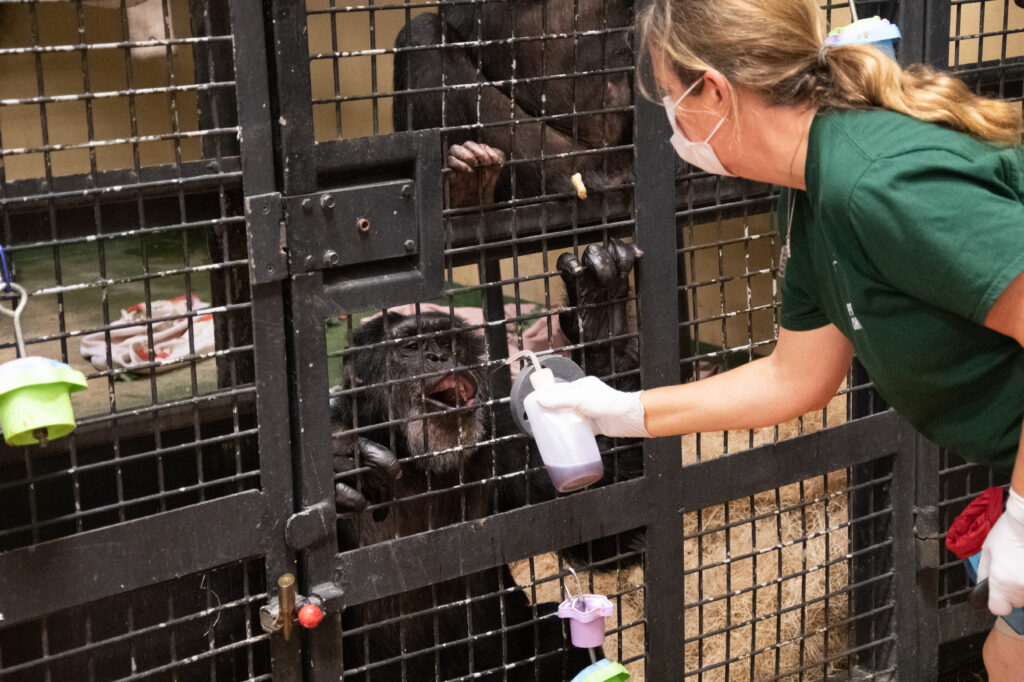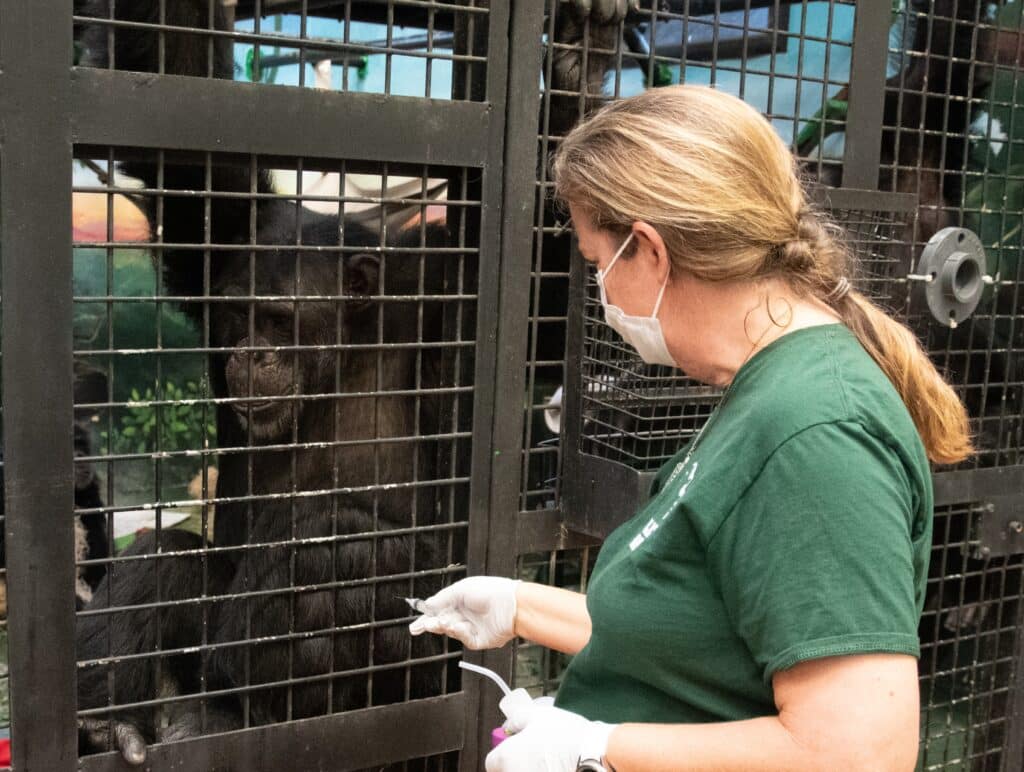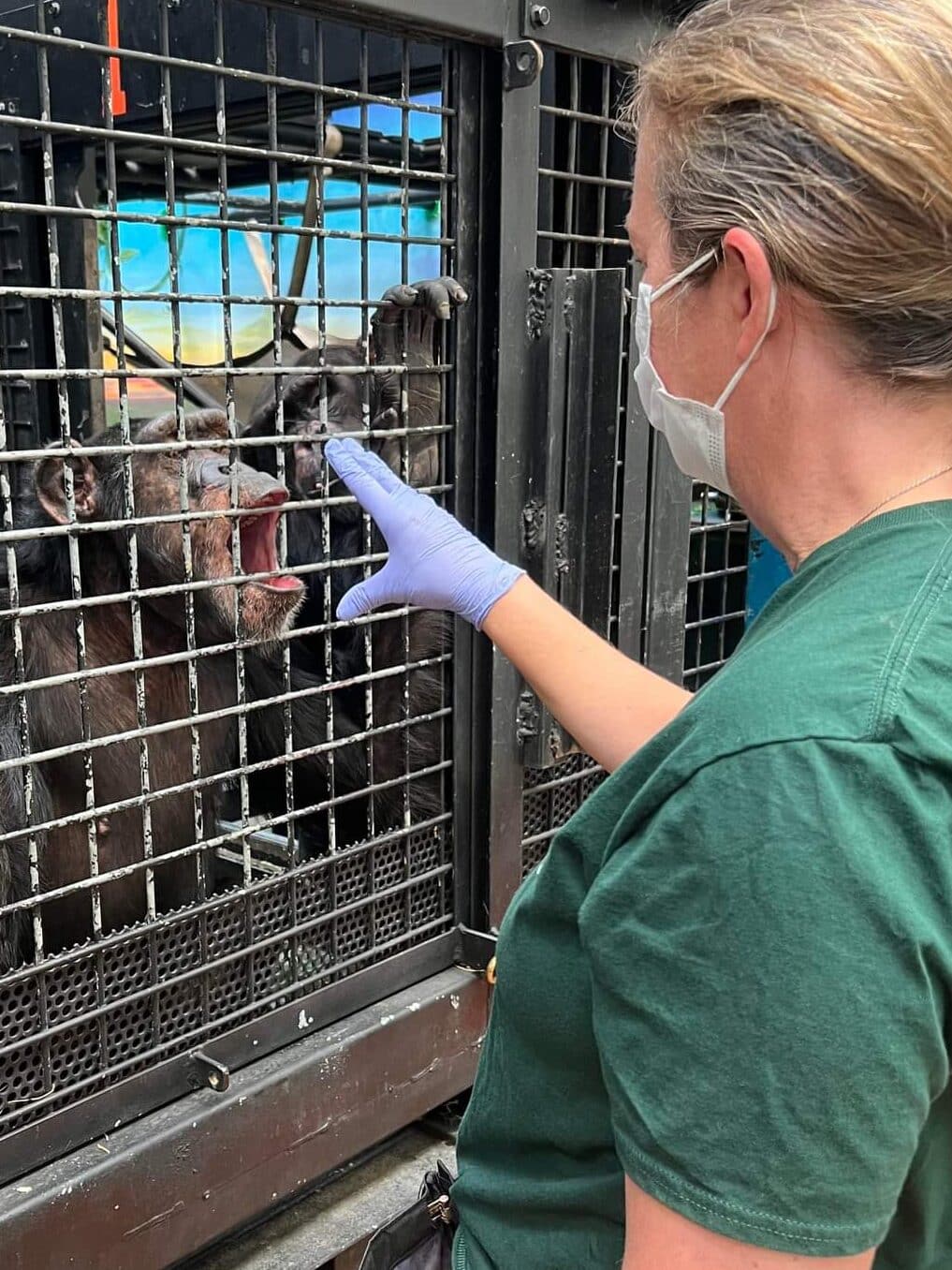
Behavior Training Journey: Big Things Have Small Beginnings

By Rachel Dragas
As a Florida native growing up in a small town, Kris Pritchard’s unique journey in animal care is proof that big things often have small beginnings.
Kris’ Background
Kris initially worked in Human Resources. But then she looked into opportunities that encouraged her love for working with animals and providing them with excellent care. She transitioned out of office life and, looking back now, can’t imagine ever returning.
Kris first worked as a zookeeper at Lowry Park and then as an ape keeper at Busch Gardens in Tampa. For an impressive two decades thereafter, Kris worked with orangutans, chimpanzees, gorillas, and small primates. In September 2021 she started at Project Chimps as a caregiver. By then, she had accumulated a wealth of pertinent experience, a majority of which was in behavior training. This background has proved invaluable to her most recently appointed role of Behavior Coordinator at the sanctuary in July 2022.

Why Develop a Behavior Training Program?
“Every interaction you have equates to behavioral communication. Having a structured behavior training program that is customized to each villa is very important, and that’s what I hope to bring here.” As a Caregiver on the North Team, Kris engaged in one-on-one mentoring with fellow Caregivers. As the new Behavior Coordinator, she looks forward to working with the South Team as well. This mentoring will ultimately enable Kris to work side-by-side with the care staff in the villas while having the individualized focus needed to achieve the greatest training impact.
Benefits of Positive Reinforcement Training
Before working in the zoo field, Kris was already familiar with Positive Reinforcement Training (PRT). She had rescued a horse and worked with a trainer. The general premise of PRT stipulates that when a positive outcome or reward follows a desired behavior, it increases the likelihood that the behavior will be repeated. “Positive reinforcement helps establish trust and build positive relationships.”
Kris is still in the process of developing the structured behavior program. “Currently, our care staff are learning how and when to use PRT.” Through the implementation of exercises like scale behavior training, she hopes that the program will help caregivers better understand the behavior process and also lessen the stress encountered in their daily activities at the sanctuary. “Excitingly, I’ve seen performance indicator criteria in training sessions progress to that of some of our other criteria.”

Strategies for Success
Establishing a sustainable behavior training program first requires the assessment of resources. Second is developing a plan that can be modified based on the animals’ needs. Chimpanzees, like humans, are all unique. “When you’re working with positive reinforcement training and notice undesirable behavior, for example, pause and consider if there is something that you might be confusing the animal on or whether the reinforcement value has declined and how you can subsequently increase motivation. If you’re experiencing less success with a process, always be willing to analyze what you’re doing and be willing to adapt your plan or thought process even in the middle of a session, which is something I’ve often had to do.”
Kris also emphasized the importance of acquiring a solid foundational knowledge of the animals’ natural history and any group hierarchies, which should cumulatively inform the expectations you set for each animal you work with.
Long Term Program Goals
“Heart disease is the number one killer of great apes in zoos and the wild. Having been instrumental to the development of a cardiac ultrasound project for gorillas and chimpanzees at Busch Gardens, I hope to also work closely with our veterinarian and the chimpanzees in this vicinity.” One of Kris’ long-term goals is to identify chimps that would need relevant training, begin that process, and once there have been sufficient observations and successes, teach caregivers to continue the training and mentoring process. “Moving forward, I’m excited to develop and optimize the structured training program to assist both chimpanzees and staff alike.”
Interested in joining the team as a behavior volunteer? Contact us today!

